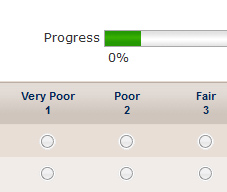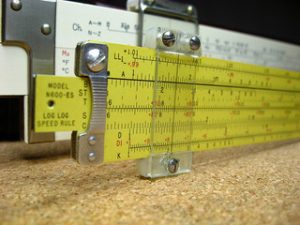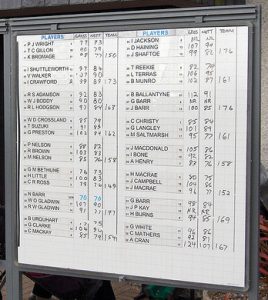Topics
Topics

Prioritizing UI Improvements: The QFD
Too much to do and too little time—that’s product design. The list of bug fixes, feature requests, pet projects and product enhancements are almost always too long to address. While the product can be a website, desktop software or an enterprise accounting system, it’s a problem that predates software development and is as old as

The 10 Most Popular UX Articles from 2012
2012 was a busy year for us at Measuring Usability LLC. We worked with dozens of great clients on many interesting projects. We hosted the successful Lean UX Denver conference and released two books. We doubled our office space and welcomed three new analysts to the team. On MeasuringUsability.com our servers saw 596k visitors and

10 Tips For Your Next Survey
Surveys are ubiquitous. We answer them and we develop them because they are an efficient means for collecting feedback and insight from current and prospective customers. Here are a mix of ten tips, insights and philosophies to consider for your next survey. Have clear and testable hypotheses: Ask a realtor and they’ll tell you the

8 Core Concepts for Quantifying the User Experience
You don’t need to be a mathematician to quantify the problems and improvements in user interfaces. Often the most compelling metrics are simple to compute and require no more than arithmetic and basic algebra. While most of us were exposed to these concepts in 8th and 9th grade, they are easy to forget and probably

Asking the Right User Experience Questions
Few things are more revealing than watching just a few users attempt tasks on a website or software. But while you’re watching users you should ask them some key questions to help put the observations into perspective. Here are eight recommendations for helping quantify both attitudes and put the insightful observations into context. Software Usability–

10 Things to Know about A/B Testing
Whether you’re new to A/B testing or a seasoned practitioner, here are 10 things you should know about this essential method for quantifying the user experience. A and B refer to Alternate Versions: A/B testing is often called split-testing as you split a sample of users where half use one version, arbitrarily called A, and

10 Things To Know About Unmoderated Usability Testing
One of the biggest barriers to conducting usability testing is the cost and time involved in testing. Moderators have to bring users to a dedicated location, test each one (usually one at a time), and only then get results from only a handful of users. Unmoderated usability testing is a technique using software such as

One Thing You Should Fix on Your Website
There’s a long list of things to fix on any website. But there are usually a few fixes which will have a disproportionate impact. To help identify those, we ask users a simple question at the end of our studies: “If you could only fix one thing on this website, what would it be?” We

10 Things To Know About The Single Ease Question (SEQ)
The Single Ease Question (SEQ) is a 7-point rating scale to assess how difficult users find a task. It’s administered immediately after a user attempts a task in a usability test. After users attempt a task, ask them this simple question: Overall, how difficult or easy was the task to complete? Use the seven point

How to Measure Findability
We need to increase findability! We test a lot of home pages and website redesigns and one of the stated goals is usually to increase findability. By findability, most development teams mean they want users to find things easily and quickly on a website. But how exactly do you measure findability? There isn’t a findability

10 Benchmarks for User Experience Metrics
Quantifying the user experience is the first step to making measured improvements. One of the first questions with any metric is “what’s a good score?”. Like in sports, a good score depends on the metric and context. Here are 10 benchmarks with some context to help make your metrics more manageable. 1. Average Task Completion

Predicting Task Completion with the System Usability Scale
Usability is attitude plus action. Attitudes and actions are measured during a usability test where a representative sample of users are asked to complete tasks. During the test we collect task-based metrics of performance (completion rates, task-time and errors) and perception (task-level difficulty). We created the Single Usability Metric (SUM) to summarize these task metrics